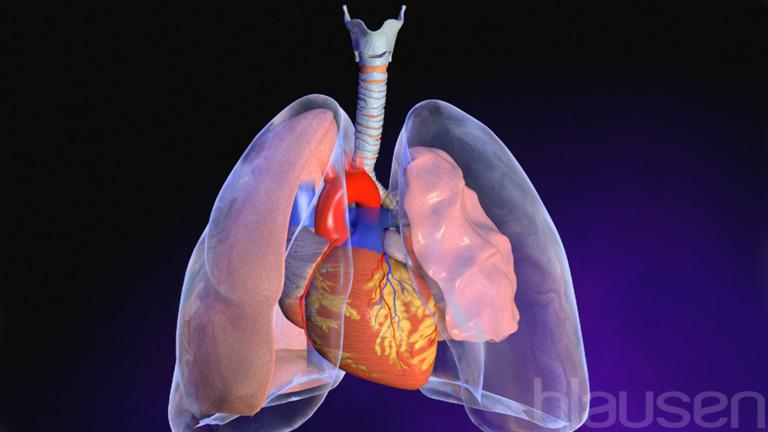
Pneumothorax
During normal respiration, the lungs expand and contract within the chest cavity. The lungs are encased by two layers of tissue, similar to a fist that has been pushed into a balloon. The space between the layers, called the pleural cavity, is lubricated so that the lungs can slide comfortably across the chest wall. If air enters this space, it is referred to as a pneumothorax. One type of pneumothorax, called a traumatic pneumothorax, can be caused by injury to the chest. A blunt or penetrating chest injury can cause a small tear on the surface of the lung, allowing air to enter the pleural cavity and to become trapped. The pocket of air produces excessive pressure on the lung, causing it to collapse. A spontaneous pneumothorax occurs without injury as a result of certain lung diseases, such as asthma, emphysema, or COPD. Small air-filled sacs, called blebs, can form on the lungs. If the blebs rupture, they can release air into the pleural cavity. Pressure from the trapped air causes the lung to collapse. However, a spontaneous pneumothorax can also develop in a person with no obvious risk factors or disease—this condition is more common in smokers and in men between the ages of 20 and 40. A tension pneumothorax is a serious complication that can develop with any pneumothorax. If the pocket of trapped air cannot escape and continues to grow, the increased pressure in the pleural cavity can push the heart and major blood vessels to the other side of the chest. When this shift takes place, it causes a significant drop in blood pressure. This is a life-threatening condition that requires immediate medical attention.